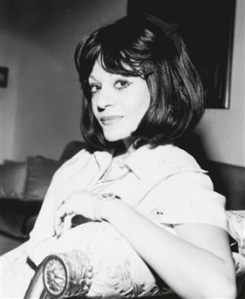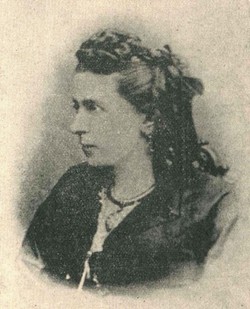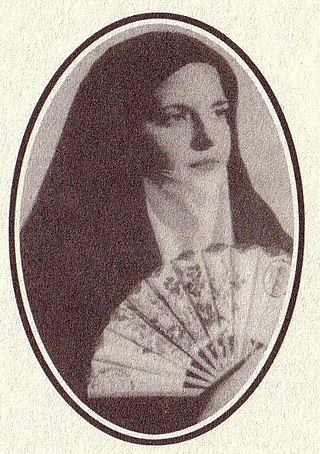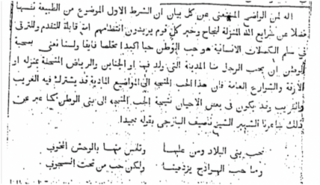The Nahda, also referred to as the Arab Awakening or Enlightenment, was a cultural movement that flourished in Arab-populated regions of the Ottoman Empire, notably in Egypt, Lebanon, Syria, and Tunisia, during the second half of the 19th century and the early 20th century.

May Elias Ziadeh was a Palestinian-Lebanese Maronite poet, essayist, and translator, who wrote many different works both in Arabic and in French.

Ghadah Al-Samman is a Syrian writer, journalist and novelist born in Damascus in 1942 to a prominent and conservative Damascene family. Her father was Ahmed Al-Samman, a president of the University of Damascus. She is distantly related to poet Nizar Qabbani, and was deeply influenced by him after her mother died at a very young age.

Aisha Abd al-Rahman was an Egyptian author, editor and professor of literature who published under the pen name Bint al-Shāṭiʾ [Daughter of the Riverbank].
Martyrs' Day is a Syrian and Lebanese national holiday commemorating the Syrian and Lebanese Muslim-Christian Arab nationalists executed in Damascus and Beirut on 6 May 1916 by Jamal Pasha, also known as 'Al Jazzar' or 'The Butcher', the Ottoman wāli of Greater Syria. They were executed in both the Marjeh Square in Damascus and Burj Square in Beirut. Both plazas have since been renamed Martyrs' Square.
Colette Khoury is a Syrian novelist and poet, born in 1931, who is also the granddaughter of former Syrian Prime Minister Faris al-Khoury. Khoury graduated from Damascus University with a bachelor's degree in French literature and she received a diploma from the school of literature in Beirut. Khoury's notability stems from her work in politics and literature. Her work as a writer focuses on love and erotica, a subject that was previously taboo in Syrian literature.
Syrian literature is modern fiction written or orally performed in Arabic by writers from Syria since the independence of the Syrian Arab Republic in 1946. It is part of the historically and geographically wider Arabic literature. Literary works by Syrian authors in the historical region of Syria since the Umayyad era are considered general Arabic literature. In its historical development since the beginnings of compilations of the Quran in the 7th century and later written records, the Arabic language has been considered a geographically comprehensive, standardized written language due to the religious or literary works written in classical Arabic. This sometimes differs considerably from the individual regionally spoken variants, such as Syrian, Egyptian or Moroccan spoken forms of Arabic.
Lebanese Turkmen, also known as the Lebanese Turks, are people of Turkish ancestry that live in Lebanon. The historic rule of several Turkic dynasties in the region saw continuous Turkish migration waves to Lebanon during the Tulunid rule (868–905), Ikhshidid rule (935–969), Seljuk rule (1037–1194), Mamluk rule (1291–1515), and Ottoman rule (1516–1918).

Maryana bint Fathallah bin Nasrallah Marrash, also known as Maryana al-Marrash or Maryana Marrash al-Halabiyah, was a Syrian writer and poet of the Nahda or the Arab Renaissance. She revived the tradition of literary salons in the Arab world and was the first Syrian woman to publish a collection of poetry. She may have been the first woman to write in the Arabic-language daily newspapers.
The tradition of women's literary circles in the Arab world dates back to the pre-Islamic period when the eminent literary figure, Al-Khansa, would stand in the 'Ukaz market in Mecca, reciting her poetry and airing her views on the scholarship of others. From this, a culture of literary criticism emerged among Arab women, and under the Umayyad dynasty, Sukaynah Bint Al-Husayn established the first literary salon in her home. The tradition was revived during the late nineteenth century, as a result of sweeping social, political and economic change within the Ottoman Empire and Europe's increasing political and cultural influence in the region. The initial pioneers of the Arab salon were women from wealthy families in the region of Syria and Egypt, who returned influenced by interaction with European women during their time spent studying abroad and frequenting Parisian salons, or studying in schools run by European or American missionaries. The salon evenings, run by women but attended by both men and women, provided a unique opportunity to have discussions about social, political and literary trends of the day. Though the tradition died out somewhat after the Second World War, it has left a lasting legacy on literary culture and women's issues throughout the Arab world.
The history of Middle Eastern newspaper publishing goes back to the 19th century. The Nahda was an important period for the development of newspaper publishing in the Middle East. During this period, a shift from government and missionary publishing to private publishing occurred. Especially in Egypt and Lebanon, newspapers became intertwined with daily life. Consequently, the rise of newspaper publishing impacted nationalism in Arab countries.

Afifa Karam was a Lebanese-American journalist, novelist, and translator. A writer for the New York City-based Arabic-language daily newspaper Al-Hoda, Karam authored three original Arabic novels as well as a number of Arabic translations of novels from English and French. She was an advocate for women's rights in the Mahjar, or Arab diaspora, and of Arab Feminism.

Zaynab Fawwaz (1860–1914) was a Lebanese women's rights activist, novelist, playwright, poet and historian of famous women. Her novel "حسن العواقب/Ḥusn al-Awaqib", is considered the first novel in Arabic written by a woman. Her play, "الهوى والوفاء/Al-Haawa wa al-Wafa", is the first play written in Arabic by a woman.
Hind Nawfal was a Lebanese Antiochian Greek Orthodox journalist and feminist writer. She was the first woman in the Arab world and the broader MENA area to publish a women's magazine and an early promoter of feminism.

Al-Muqtaṭaf was an Arabic journal of popular science. The journal was published monthly from 1876 to 1952 in Beirut and Cairo with a total of 121 issues. Along with Al-Manar and Al-Hilal, it was one of the Arab world's three most popular journals in the early 20th century.
Nicola Ziadeh was historian and author of Palestinian origin, Lebanese nationality, born in Syria.
Salma al-Haffar Kuzbari was a Syrian writer and translator. She is best known for her literary criticism and biography on the women's rights activist and writer May Ziadeh, as well as for her writing on Spain's Andalusia region, notably the book The Two Eyes of Seville.

Hadiqat al-Akhbar was a weekly newspaper which was published in Beirut in the period 1858–1911 with a two-year interruption. Its subtitle was Ṣaḥīfat Sūriyya wa-Lubnān. The paper was the first private daily in Beirut, the first Arabic newspaper which had a regular literary section and the first weekly Arabic newspaper in the region.
Nadra Haddad was a Syrian poet, and a founding member of The Pen League, the first Arabic-language literary society in North America.
Al Arus, also known as Al Arous was a women's magazine which was one of the earliest feminist publications in the Middle East. It was also the first Arabic women's magazine in Syria. The magazine appeared between 1910 and 1925 with some interruptions. The founder and editor of the magazine was a Syrian woman, Mary Ajami. It was first based in Alexandria, Egypt, and then in Damascus, Syria.









